Is a 4000 Kelvin LED street light like the moon?

‘Let’s kill the moonlight!’ proclaimed the Italian poet Filippo Marinetti a few years after Edison’s incadescent lamp enchanted the world. With all our light pollution, we have been quite successful in doing this. And today, some people believe they can create an artificial moonlight. The light of a 4000 Kelvin LED street lamp, so some city spokespeople, is similar to moon light and therefore ‘natural light’. But is this really the case?
What is Kelvin anyway?
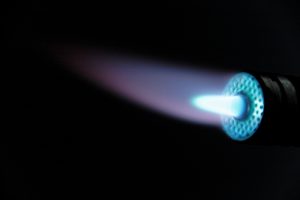
The unit Kelvin [K] gives the colour temperature of light. It is based on a flame which changes its colour with temperature. The hotter a flame, the whiter it appears, so the higher the colour temperature in Kelvin, the whiter the light. This is quite contradictory to our feeling of white equals cold and red equals hot, but life’s rarely easy.
Colour temperature is often called CCT (Correlated Colour Temperature) and used to describe the colour of a light source. We usually refer to light below 3300 K as warm-white, between 3300 K and 5300 K as neutral-white, and above 5300 K as cold-white. Moon light has about 4000 K.
When cities started to install LED street lights, they went for 7000 Kelvin because it was the most energy-efficient light and it seemed similar to sunlight. However, people started to complain about this light. Also, research showed that cold-white LED light can have unpleasant consequences for human health and wildlife. So 5000 Kelvin became the CCT of choice, and, since residents and researchers still weren’t happy, CCTs went even lower. Today’s recommendations suggest street lights below 3000 Kelvin, but some people still say that 4000 Kelvin would provide better visibility. And if it’s the same CCT as the moon, it must be okay, because nobody complains about moon light. Is it?
Colour temperature is not the only thing
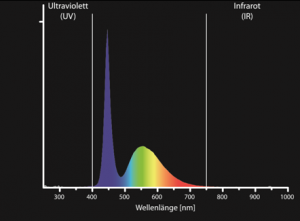
As I said, life is rarely easy. Colour temperature is a complicated matter and depends on a variety of factors. It’s comfortable for lay people to use, because it’s only one number and it appears easy to understand. But in reality you can’t compare the colour temperature of two technically different light sources. Much more, many engineers will tell you that you can’t use CCT for LEDs at all. Here is one problem with CCT:
When we talk about the impact of light on health and ecology, we need to consider wavelengths. Shortwaved light, especially blue light, at night messes up our circadian rhythms (including those of all animals and plants in the area) and attracts a variety of animals. It can generally be said that the higher the blue content of an LED, the higher is the CCT. Today’s recommendations, for example from the American Medical Association, therefore advise the use of LEDs with CCTs not higher than 3000 Kelvin.
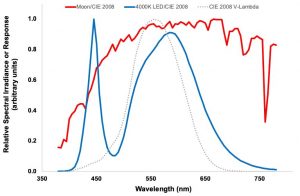
But light usually contains a broad spectrum of wavelengths. The different wavelengths and their strength is given as the spectral power distribution (SPD). You can have two light sources with different SPDs but the same CCT. A 4000 Kelvin LED has a high content of blue light and very little red. Moonlight has little blue light, but lots of light in the yellow-orange-red range. They do have the same colour temperature, but moon light has little impact on our circadian rhythm (it has if you are a little midge in a tidal zone, but I’ll come back to that later). The LED with a spectrum most similar to moonlight might be the 2200 Kelvin LED, also known as Amber LED, which emits a warm orange light. So no, 4000 Kelvin LEDs are not like moonlight!
So why does the moon look so white?
If you look at the moon it appears much whiter than the sun. However, the sun has a much higher colour temperature, ranging from 5000 K to 27000 K, depending on day time and cloud cover. So why do we see a white or silver moon when, according to its spectrum, it should be red? This is mostly due to an optical illusion in our retina. In darkness, we see with our rods. They are very light-sensitive, but colour-blind. This is the reason why at night all cats are grey. To see colours, we use our cones, but they need a certain amount of light. The moon just supplies enough light for the cones to see some colours in the wavelengths, in which they are most sensitive, which is yellow-green around 560 nm. Moonlight is not bright enough to ‘see’ red light.
Moon light matters
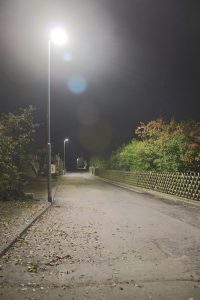
Now we know which LED could provide a light similar to moonlight. Amber LEDs currently seem to be the best option for energy-efficient, healthy, and environmentally friendly light, although there are several problems with the LED technology as such which I will not discuss here. So would using an Amber LED be like a natural moonlit night and therefore umproblematic? Even if we would be able to produce a light which would have the exact spectral composition of moonlight, there would still be some ecological problems.
The most obvious problem would be brightness. There is some debate about the exact illuminance of the moon, but to be on the safe side we can say we see the full moon with no more than 0.25 Lux. Modern LED street lights often come up to 40 lux or more in residential areas. Light levels at busy streets are up around 75 Lux and more. So the simple amount of light provided by one LED street light makes the moon appear rather dim and unimportant.
But moon light is a very important factor in ecology. The full moon is only visible approximately every 29.5 days. In the time between, it is waxing and waning, so every night we see a bigger or smaller portion of the moon. Additonally, during one cycle, the times of moon rise and set shift, so for most of the night, the moon is not in the sky or moonlight will be rather dim. A clear moonless night has an illuminance of 0.001 Lux, which is a long way from everything produced by street lights.
We humans in our technical world might have lost the feeling for the different brightness during the moon cycle, but for many organisms it’s still an essential factor for survival. Many aquatic insects use the shelter of darkness to emerge from their larval stage. If they are close to artifical light, which is the case in many rivers and ponds in and around cities, they might wait for ever. But even if they emerge in the light, they are easy prey for fish which use the light to extend their hunting times.
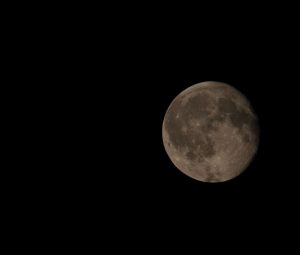
Small mammals also know the dangers of the full moon and spend less time foraging in moonlit nights, even if this means that they will loose weight. A constant full moon could be fatal for them.
Especially in marine animals, moon cycle is important for reproduction. The tidal midge Clunio marinus has a lunar clock that controls physiological functions in larvae and adults to make sure that they are ready for reproduction during the lowest tide.
Whether the moon influences human physiology is scientifically debated, but there is some evidence that the moon indeed influences our sleep and several hormones.
We are just beginning to understand how moonlight influences life on earth. However, we must assume that providing constant moonlight brighter than the real moon will have an impact on many lifeforms. Whenever we use light at nigth, we should make sure that it is only a bright as needed and well shielded. We must always consider if we really need light at a given place and we must always remember, no matter how ‘nature-like’ artificial light might be, artificial light at night can never be natural.
I would like to thank Simon Nicholas and Neil Haigh for some valuable comments on the technical part of this article.
5 Replies to “Is a 4000 Kelvin LED street light like the moon?”
Thank you for this informative, educational and enlightening post!
Thanks! Another point is that the moon is a warm colored body that is lowering the blue content of the 6500K sunlight it is reflecting down to 4125K while LED uses a mix of colors including about 30% blue to create 4000K light.
what are the lights of that size used for?
4000 Kelvin is one of the most common colour temperatures for street lights and car parks, and they are also used for private houses, driveways, etc. It’s not so much a matter of size, it’s the sheer mass of these lights. 3000 Kelvin LEDs today are as energy efficient as 4000 Kelvin LEDs, can even allow a better colour recognition, produce less glare and have a lower ecological impact. And the technical development isn’t at its end. There are 2700 Kelvin LEDs out there with very good colour rendering, little blue content, and little glare. They might be slightly less energy efficient, but compared to traditional white light sources, this is neglectable. Only flaw so far ist price and availability, but as usual, when people ask for a product, it will get cheaper.